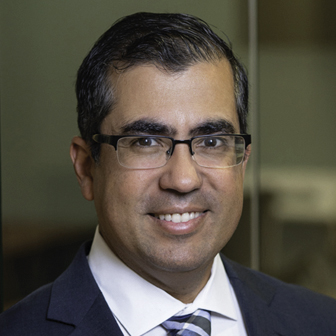Robotic Lobectomy Sophisticated, Effective Tool in Fighting Lung Cancer
Procedure can remove cancer with quicker recovery times for patients than traditional method
DAYTON, Ohio (September 29, 2014) – Lung cancer is the leading cancer killer in both men and women and according to the American Lung Association ![]() , and it will claim nearly 160,000 American lives by the end of this year.
, and it will claim nearly 160,000 American lives by the end of this year.
However, the ability to fight the disease and beat the odds is getting better. Many lung cancer patients now have a minimally- invasive choice when it comes to the removal of the disease. A robotic pulmonary lobectomy, as it is called, enables surgeons to remove the diseased lobe of a lung with better outcomes than the traditional method. Patients who undergo robotic surgery may experience shorter hospital stays, reduced risk of infection, less blood loss, fewer transfusions, less scarring, faster recovery, and a quicker return to normal life.
The removal of the diseased lobe of the lung, known as a pulmonary lobectomy, is one of the most common surgical treatments for lung cancer. Traditional thoracotomy (cutting into the chest wall) and lobectomy require a large incision, often resulting in substantial blood loss and a lengthy, uncomfortable recovery.
 “The national average stay for a traditional lobectomy used to be seven days,” said Jose Rodriguez, MD, a surgeon with Cardiothoracic Surgery Associates and Medical Director of the Cardiothoracic Robotic Program. “With the robotic lobectomy, we can discharge patients sooner depending on circumstances. It is beneficial to the patient as it can result in fewer rates of infection, allowing them to return to normal life quicker, and it can lessen the cost of healthcare.”
“The national average stay for a traditional lobectomy used to be seven days,” said Jose Rodriguez, MD, a surgeon with Cardiothoracic Surgery Associates and Medical Director of the Cardiothoracic Robotic Program. “With the robotic lobectomy, we can discharge patients sooner depending on circumstances. It is beneficial to the patient as it can result in fewer rates of infection, allowing them to return to normal life quicker, and it can lessen the cost of healthcare.”
Dr. Rodriguez and his partners use the da Vinci robotic surgery system to perform pulmonary lobectomies and other thoracic surgeries. A traditional lobectomy may require an incision measuring up to 10 inches in length, but with the da Vinci, surgeons insert tiny mechanical arms into the patient through five small incisions. The surgeon controls the movements of the robotic arms through controls at a console several feet away from the operating table. The robot translates the surgeon’s hand, wrist and finger movements at the control console into corresponding micro-movements of the instrument tip. Similar movements also control a camera to see inside the patient’s body providing surgeons high-definition 3D vision and magnification of the surgical area by factor of ten times.
Surgeons are also able to perform surgery with the same precision each time, which is something that is not possible with traditional surgery.
Joseph Houda, MD, a surgeon with Cardiothoracic Surgery Associates, said that despite the benefits of robotic surgery, a large portion of the public is still unaware about its effectiveness and success. He also believes misconceptions are born out of misunderstandings of how the procedure works.
“I have had patients who have told me, ‘I don’t want a robot working on me, I want you to work on me,’” Dr. Houda said. “And what they don’t understand is that the robot is like a very fancy tool or a very fancy scalpel that the surgeon is controlling. Never once does it work autonomously. I find that once I explain that to patients they are much more comfortable with it.”
Not all patients are candidates for robotic lung surgery. There are tumor size and location considerations. Usually Stage I and II cancer patients benefit from robotic surgery, which is why early detection is so important. The earlier cancer is caught, the higher the likelihood of performing a lobectomy for patients without that patient having to undergo additional therapy such as radiation or chemotherapy, Dr. Rodriguez said.
To learn more about robotic lung surgery or Cardiothoracic Surgery Associates, a Premier Health Specialist’s practice, go to www.premierhealthspecialists.org.
Contact Us
Discover more about Premier Health and join us in building healthier communities in Southwest Ohio. Learn more about working at Premier Health, becoming a volunteer, and making a gift to support our mission.

